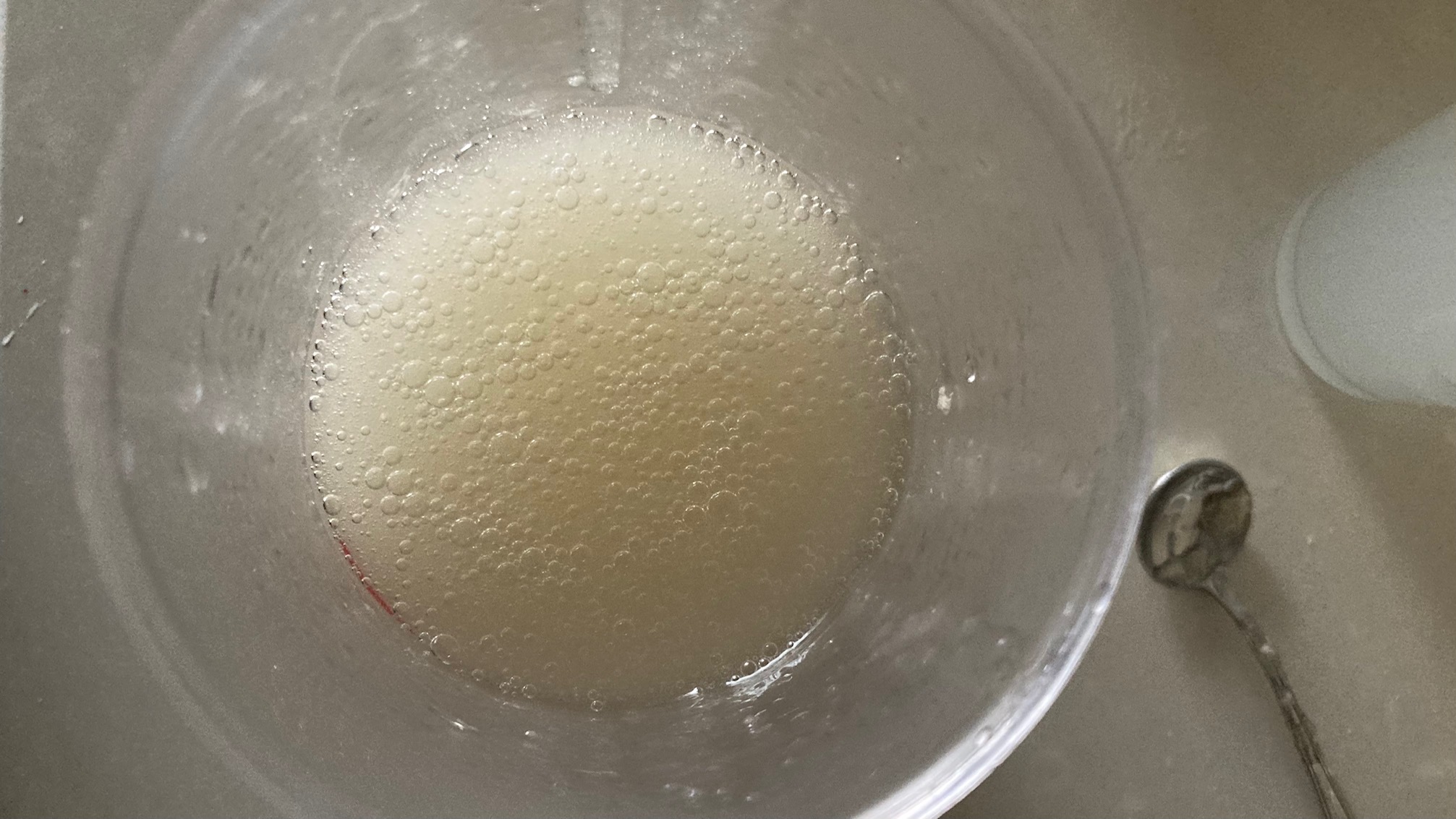Remixing Materials I
Reflection
The definition of biomaterials causes me a lot of havoc. Because designers use the word as bio-based materials, but scientists, engineers and doctors use the word as materials that can be used in the body.
But of course what does the dictionary say, both the Spanish (rae) and the French (larousse) only allude to the scientific definition. But the English dictionary (Cambridge) does define both options. So it is not wrong when we speak in English to talk about biomaterials as bio based materials. As for the other languages, they would have to broaden their meanings.
Biomaterial is
- a substance that is naturally produced, for example by plants or insects, and can be used as a material for making things or as fuel.
- a substance that can be used in someone's body to help with a disease, injury, or other medical condition.
meaning in the Cambridge English Dictionary
One of the great qualities of biomaterials is that they can be made from waste, especially organic waste. This helps to create a cleaner world. But at the same time we have to think about the consequences of creating these materials, as they come from natural raw materials, which in some way also participate in this environmental exploitation. So, it is clear that biomaterials are a good measure to curb polluting materials, but as long as you don't use exploitative tools.
Depending on the materials used in the process of creating the biomaterial, it will have different properties. It is clear that the environmental characteristics both at the time of its creation and in the drying process will also change these characteristics.
As is evident, common plastics are compared with biomaterials. Since the plastics revolution, these common plastics have been exploited and improved for mass production. And of course, their properties are much better for production than biomaterials, which in my opinion is due to the investment of money in the 1960s. And therefore, I think that if there was more investment in biomaterials, they could explore many more areas of production, but at the same time, that is the place where these materials have no way out, as they try to escape from the system of overproduction itself. The manufacturing processes of biomaterials also leave much to be desired.
What I mean is that scientific, chemical and physical investment in biomaterials should be fundamental to their own technological advancement. Not only in a form of design experimentation, but scientifically in an atomic form.
Submission
Alginate biopolymer recipe:
- 12,5 grs. alginate
- 500 ml. water
- 30 ml. glycerin
calcium chloride solution:
- 30 grs. CaCl / 500 ml. H2O
I don't know what properties are derived from the creation of this material. That's why I want to make two sheets, one with organic materials I found in the forest and one without anything. Then I would like to make small balls to be able to test if I could make confetti out of this material, thanks to the encapsulation property with the calcium chloride. But I don't know if it would be too rigid to be used as confetti.
Here you have some pictures of the creation process and initial moulds.
Drying process
During the process I had some problems as the mould was exchanged as it was immediately reclaimed for culinary use. Then the drying process of the material strips was a bit interrupted. After 4 days they are still drying, I think I made it too thick. I put them in the sun hoping they would dry faster, but they have clumped together rounding off all the sides.
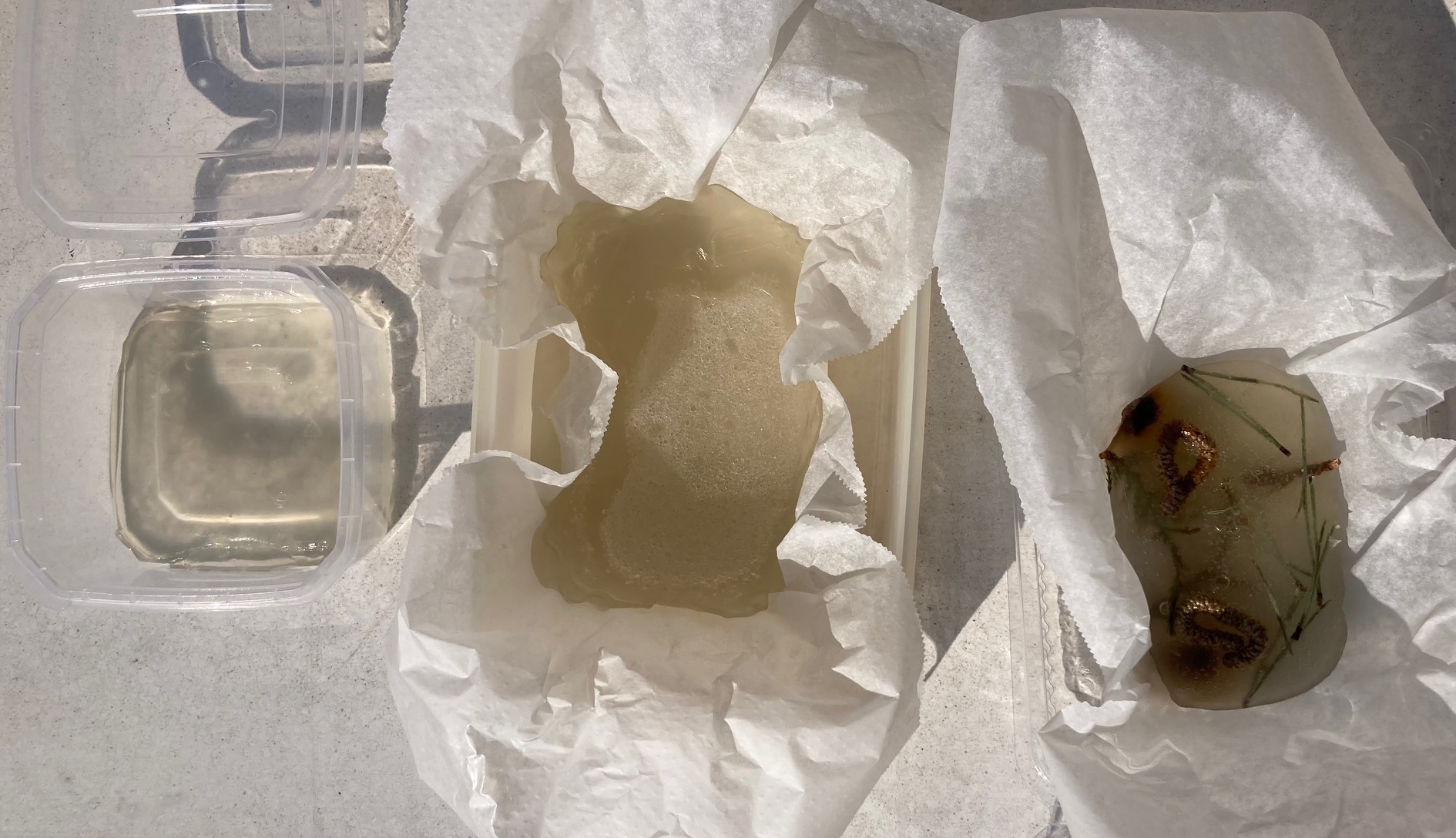
On the other hand, the yarn and the rounds have dried correctly, being much stiffer, and the yarn more fragile and stiffer too.
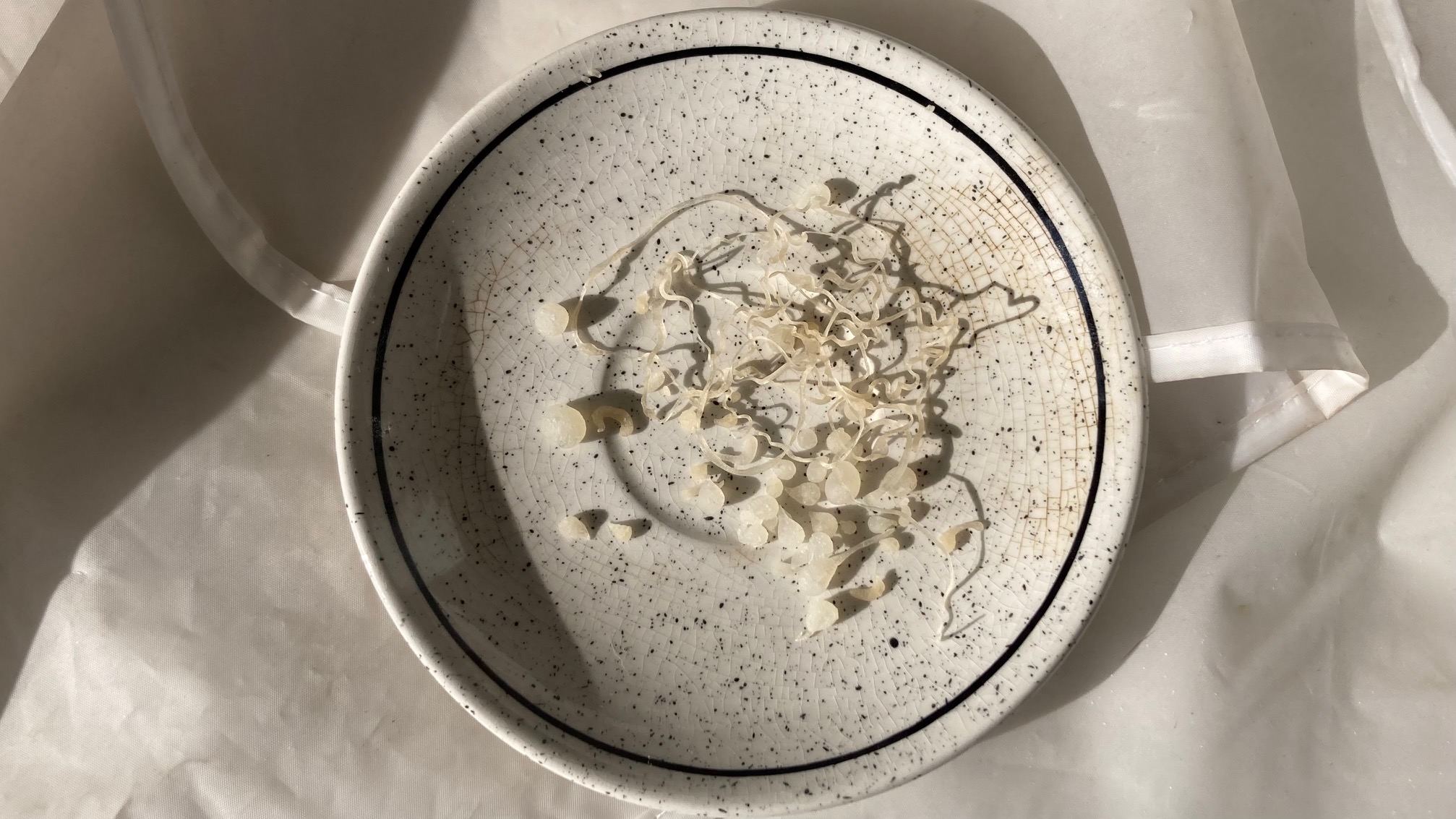
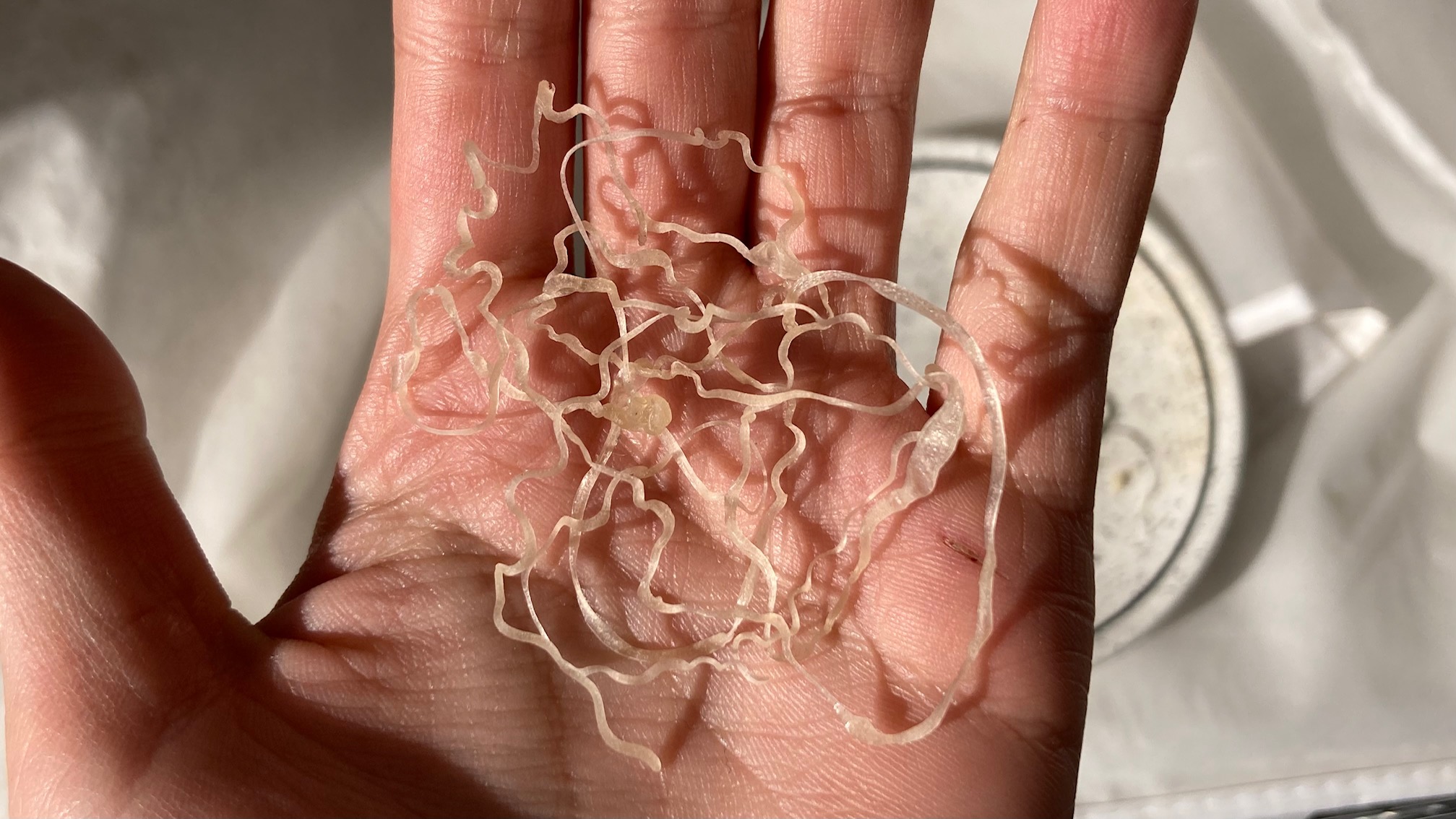
Conclusions
The small balls I wanted to see if it was feasible to make sustainable confetti out of them, but after drying, I can see that they are very stiff. So one of the functions that could be implemented on them would probably be pellets, or perhaps for jewellery such as bracelets or earrings.
Final Observation
After waiting a couple of weeks, the materials have finally finished drying. All three have been dried in the same scenario. The thickest material and that of plants have been transplanted from their mold when they were not yet dry.
From these premises, we can observe that the coarse material has developed mold, while that of the plants has been totally restricted in form by them. Finally we can see that the one that had been placed in a plastic mold without paper, has been in perfect condition being elastic and flexible, and has no mold. All have shrunk a lot, about 4cm on each side and irregularly shaped.


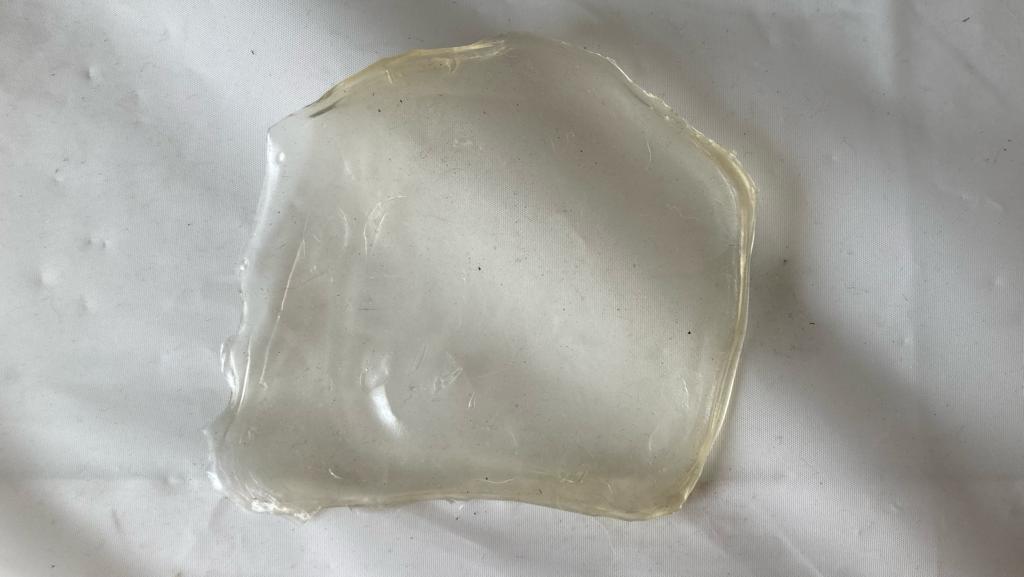
Remixing Materials II
Reflection
In my opinion, to address the circular economy must become a neighborhood movement. To take the manufacture, transport and exploitation of new materials out of the equation, as major factors of the climate emergency. The idea is to reuse and build new objects with waste, as a local resource.
Submission

